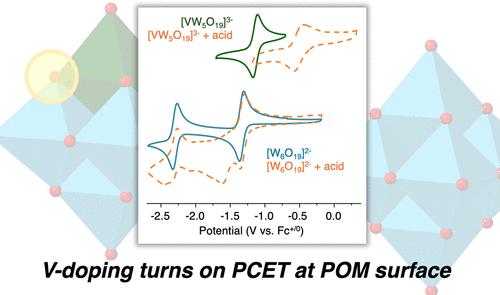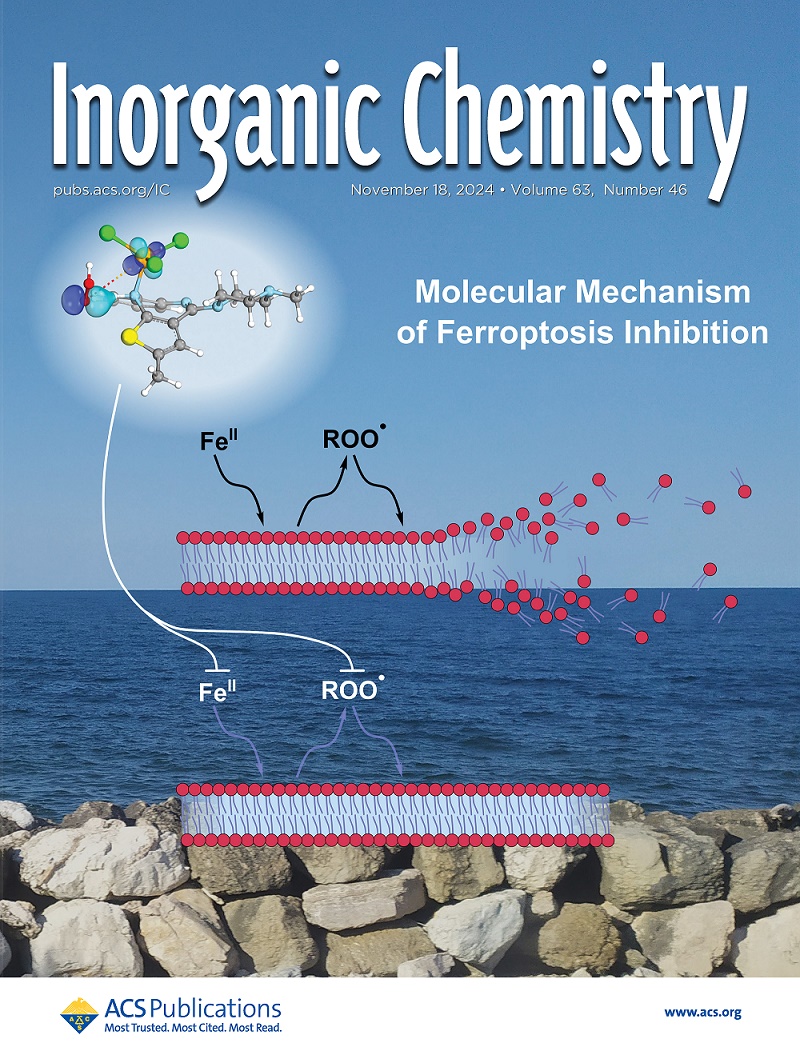Vanadium Substitution Dictates H Atom Uptake at Lindqvist-type Polyoxotungstates
IF 4.7
2区 化学
Q1 CHEMISTRY, INORGANIC & NUCLEAR
引用次数: 0
Abstract
Understanding how modification of molecular structures changes the thermochemistry of H atom uptake can provide design criteria for the formation of highly active catalysts for reductive transformations. Herein, we describe the effect of doping an atomically precise polyoxotungstate with vanadium on proton-coupled electron transfer (PCET) reactivity. The Lindqvist-type polyoxotungstate [W6O19]2– displays reversible redox chemistry, which was found to be unchanged in the presence of acid, indicating an inability to couple reduction with protonation. However, the incorporation of a single vanadium center into the structure significantly changes the reactivity, and the potential required for one-electron reduction of [VW5O19]3– was shown to vary with the strength of the acid added. Construction of a potential-pKa diagram allowed assessment of the thermodynamics of H atom uptake, indicating BDFE(O–H) ≈ 64 kcal/mol, while chemical synthesis of the reduced/protonated derivative (TBA)3[VW5O19H] was used to probe the position of protonation.

钒的替代决定了林德奎斯特型多氧钨酸盐对 H 原子的吸收
了解分子结构的改变如何改变吸收氢原子的热化学过程,可以为形成高活性还原转化催化剂提供设计标准。在此,我们描述了在原子精确的多氧钨酸盐中掺入钒对质子耦合电子转移(PCET)反应性的影响。Lindqvist型多氧钨酸盐[W6O19]2-显示出可逆的氧化还原化学性质,这种化学性质在酸的存在下保持不变,这表明它无法将还原与质子化结合起来。然而,在结构上加入单个钒中心会显著改变反应活性,而且[VW5O19]3- 的单电子还原所需的电位随加入酸的强度而变化。通过构建电位-pKa 图,可以评估吸收 H 原子的热力学,结果表明 BDFE(O-H) ≈ 64 kcal/mol,而还原/质子化衍生物 (TBA)3[VW5O19H] 的化学合成则用于探测质子化的位置。
本文章由计算机程序翻译,如有差异,请以英文原文为准。
求助全文
约1分钟内获得全文
求助全文
来源期刊

Inorganic Chemistry
化学-无机化学与核化学
CiteScore
7.60
自引率
13.00%
发文量
1960
审稿时长
1.9 months
期刊介绍:
Inorganic Chemistry publishes fundamental studies in all phases of inorganic chemistry. Coverage includes experimental and theoretical reports on quantitative studies of structure and thermodynamics, kinetics, mechanisms of inorganic reactions, bioinorganic chemistry, and relevant aspects of organometallic chemistry, solid-state phenomena, and chemical bonding theory. Emphasis is placed on the synthesis, structure, thermodynamics, reactivity, spectroscopy, and bonding properties of significant new and known compounds.
 求助内容:
求助内容: 应助结果提醒方式:
应助结果提醒方式:


